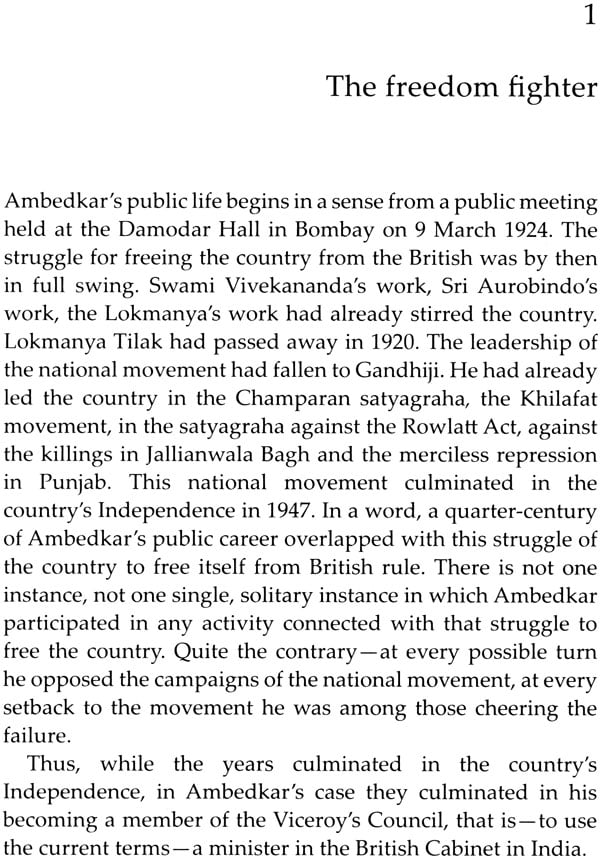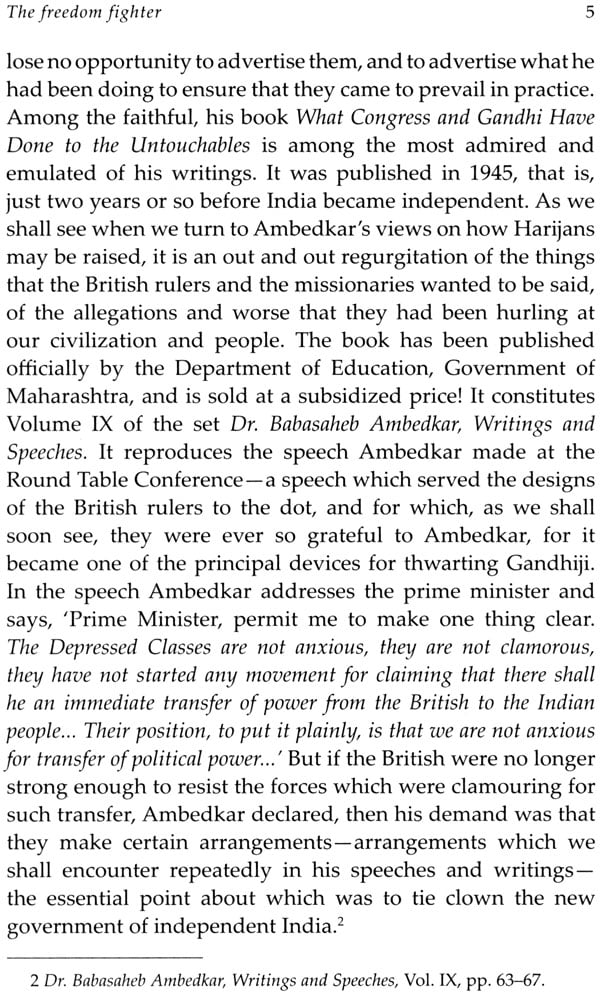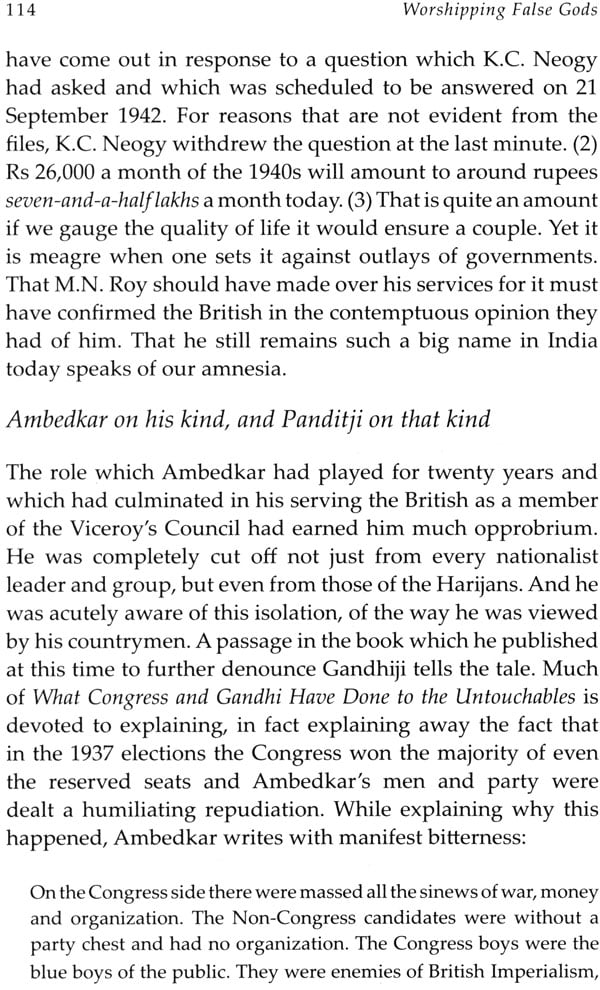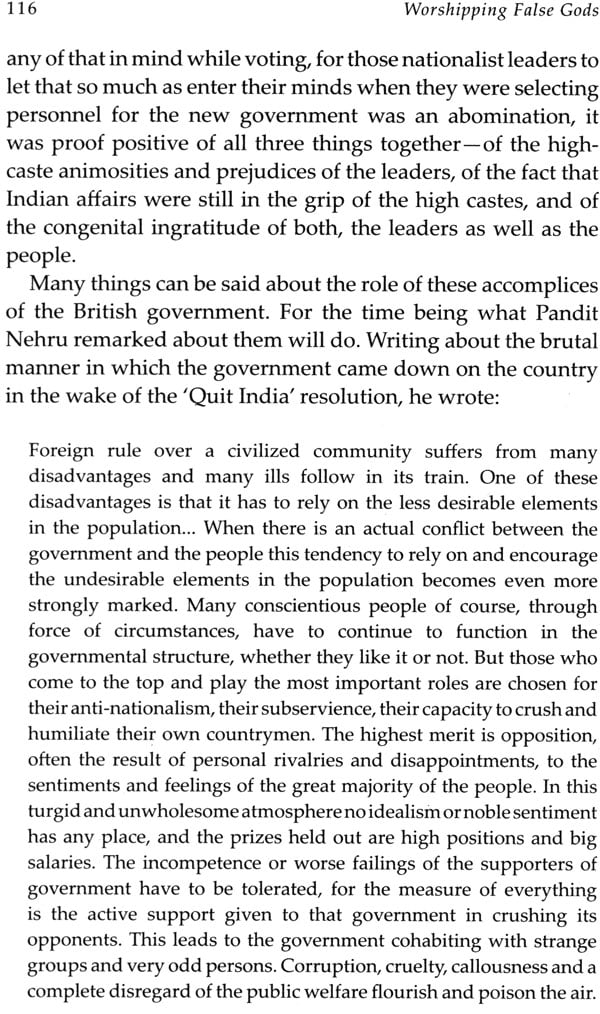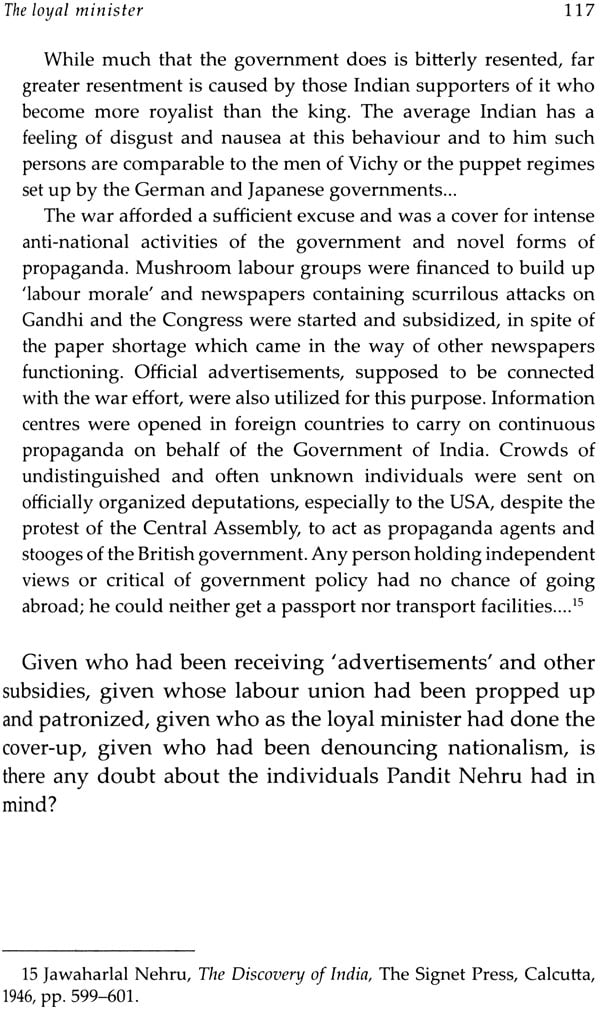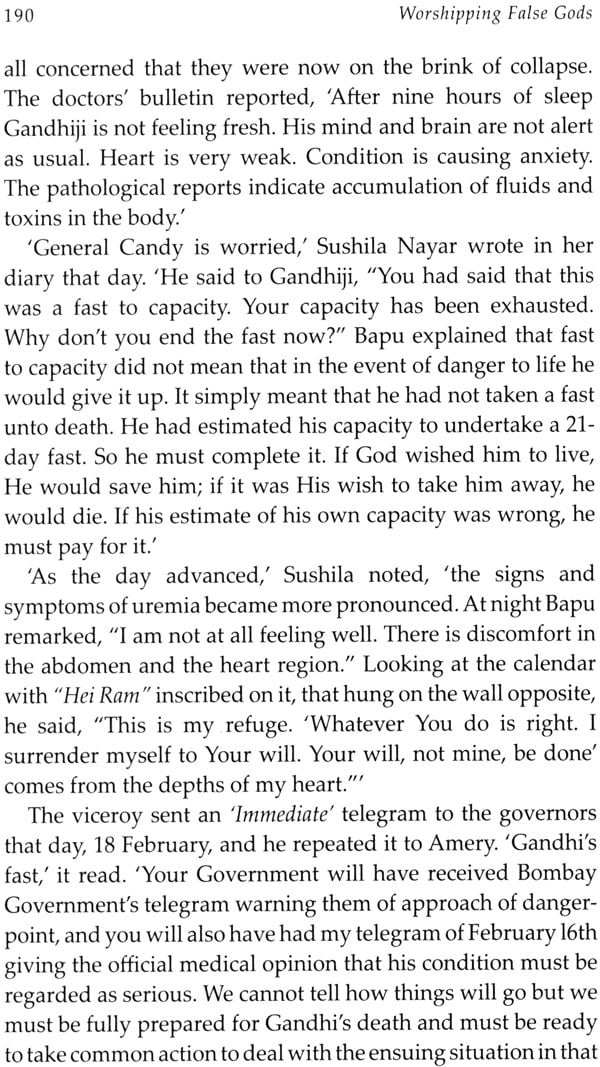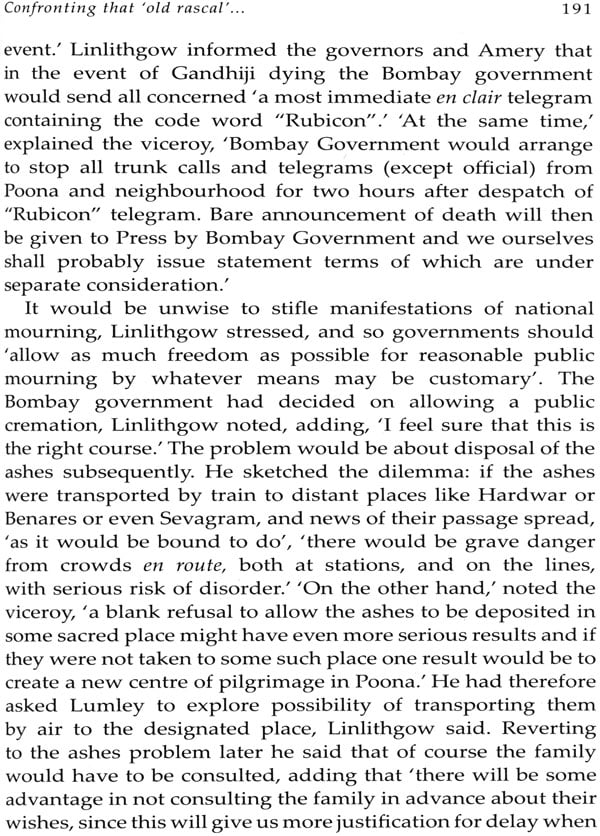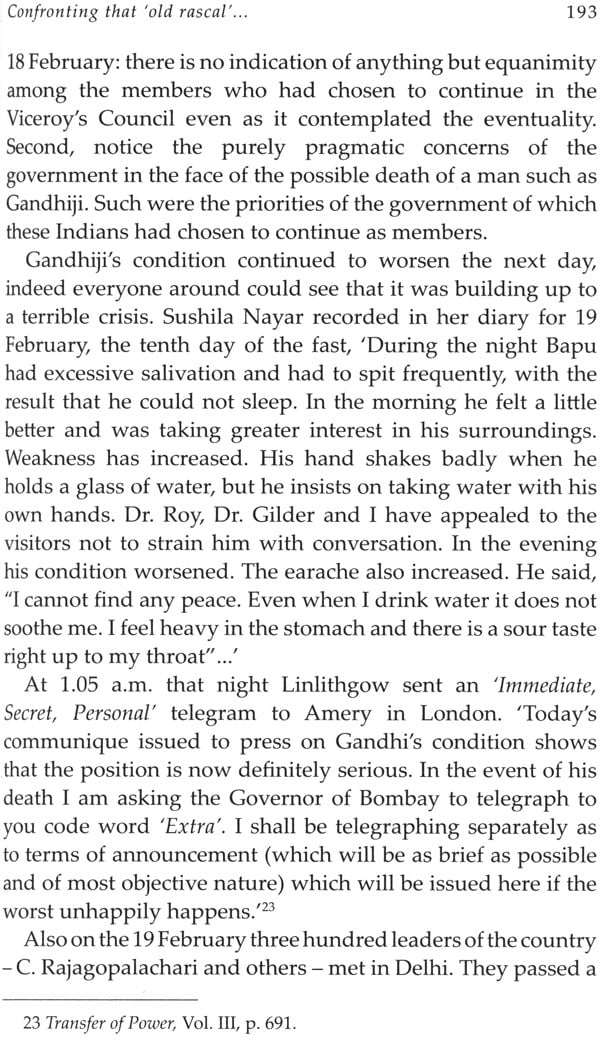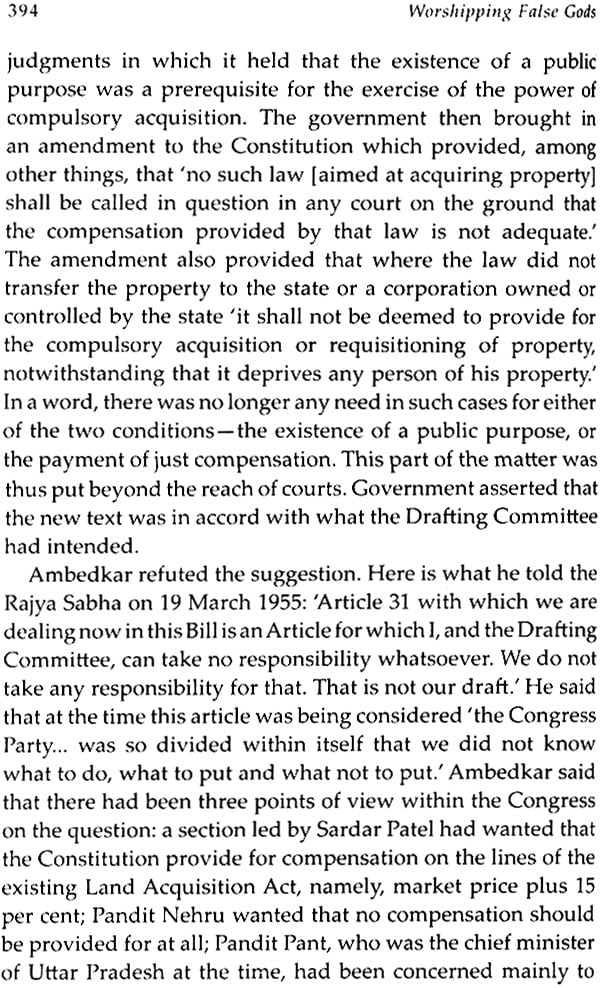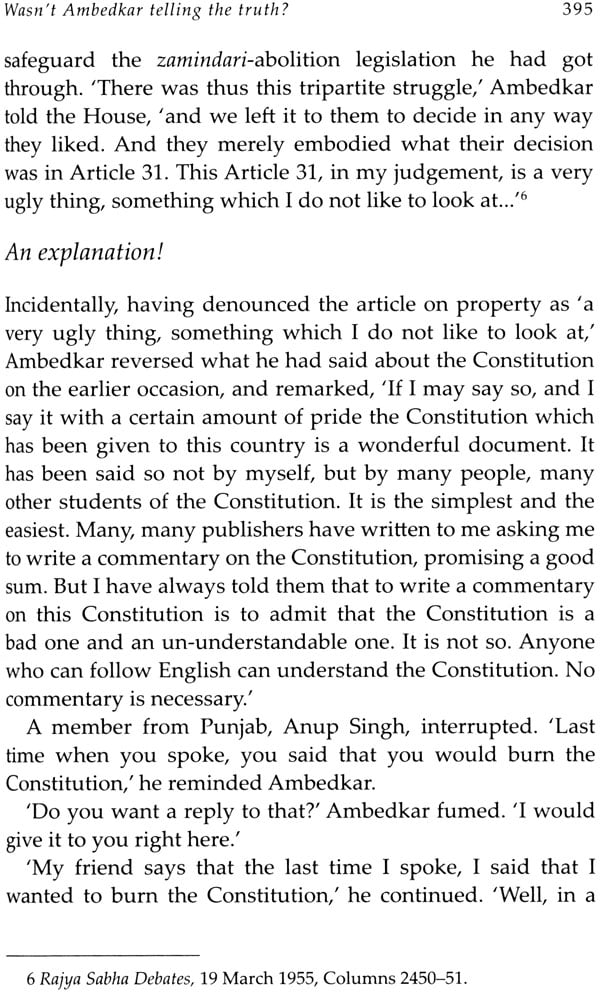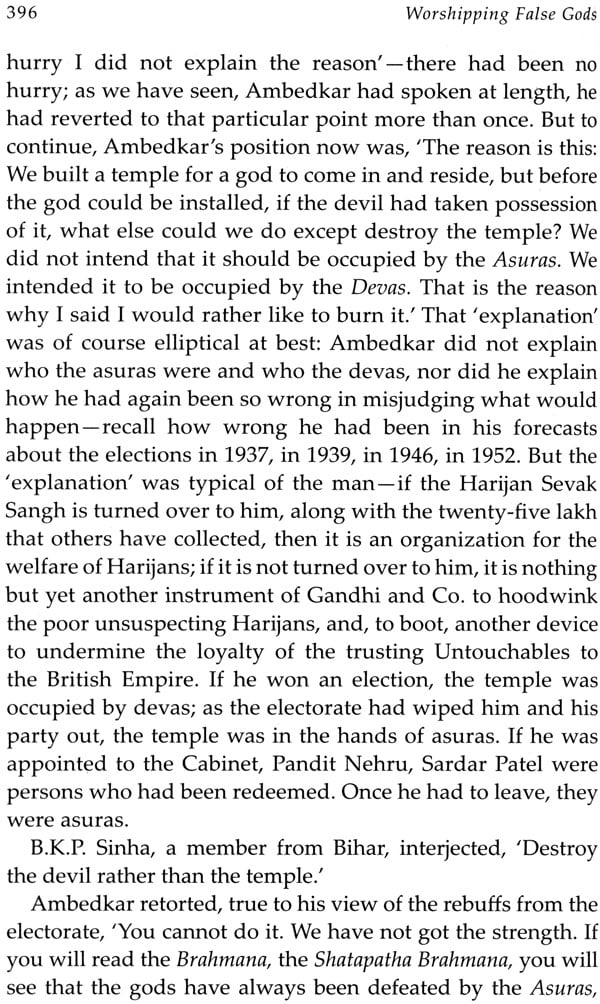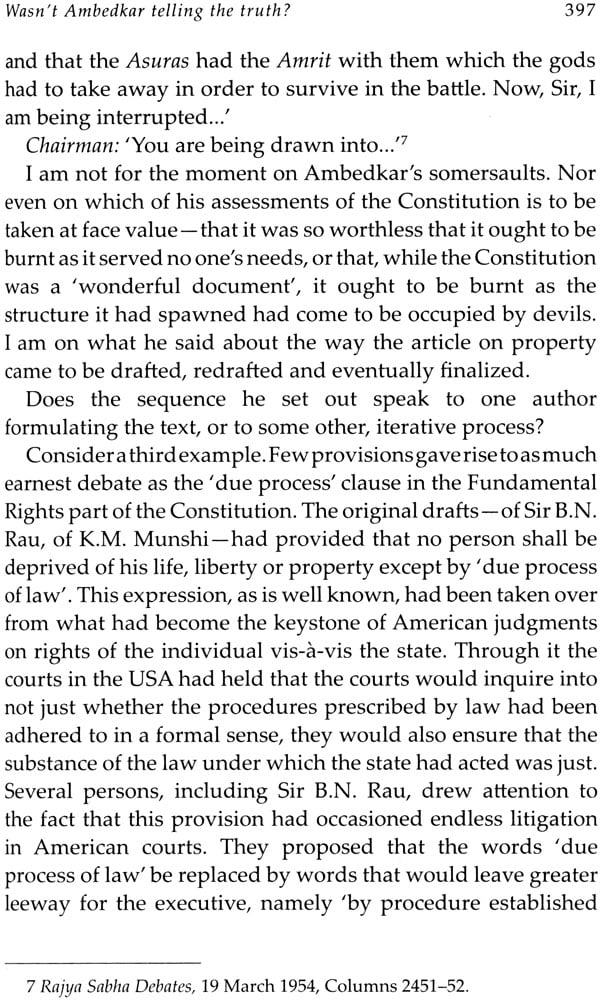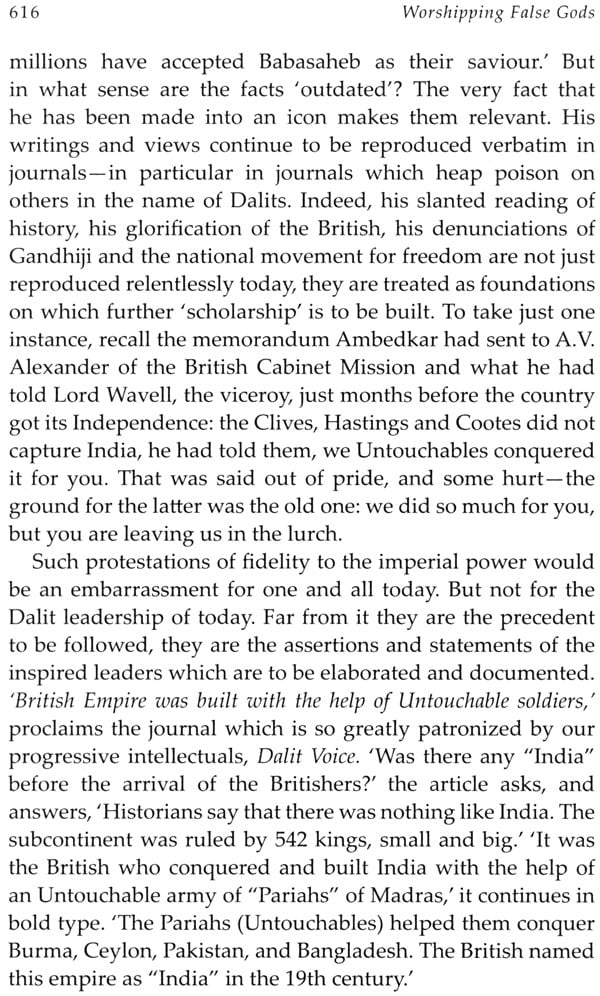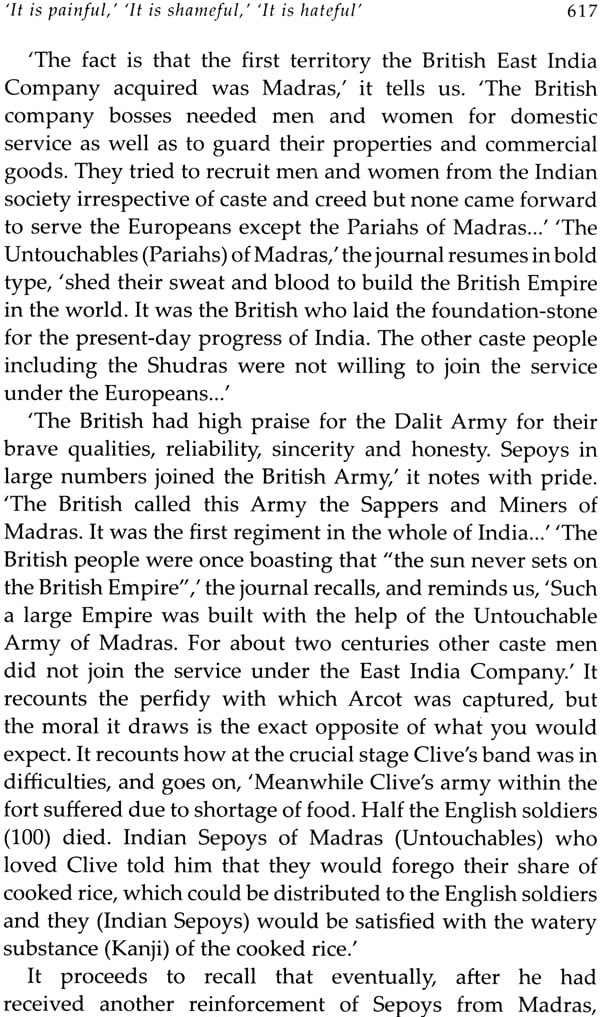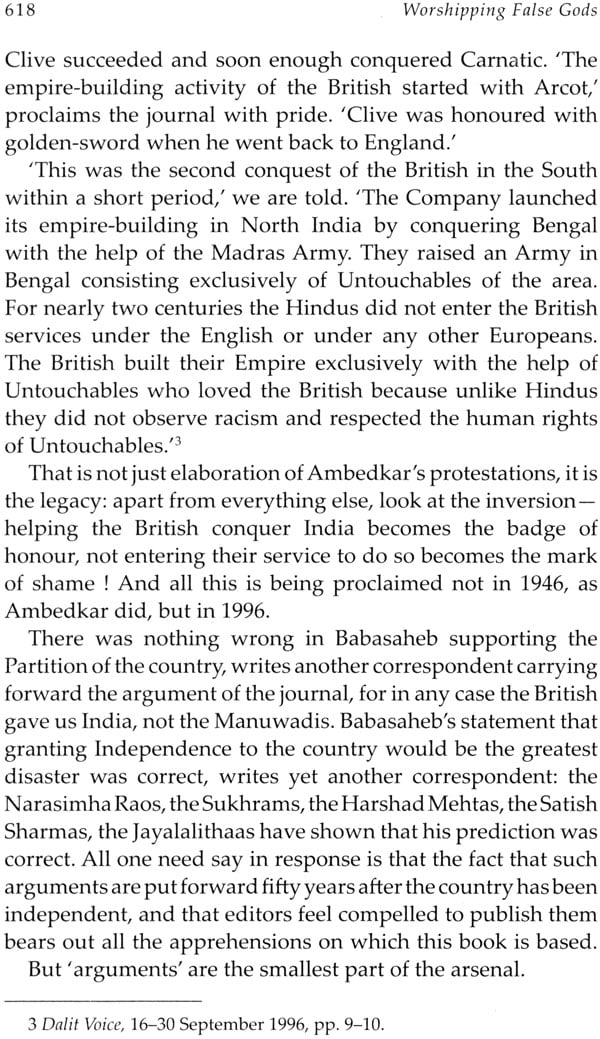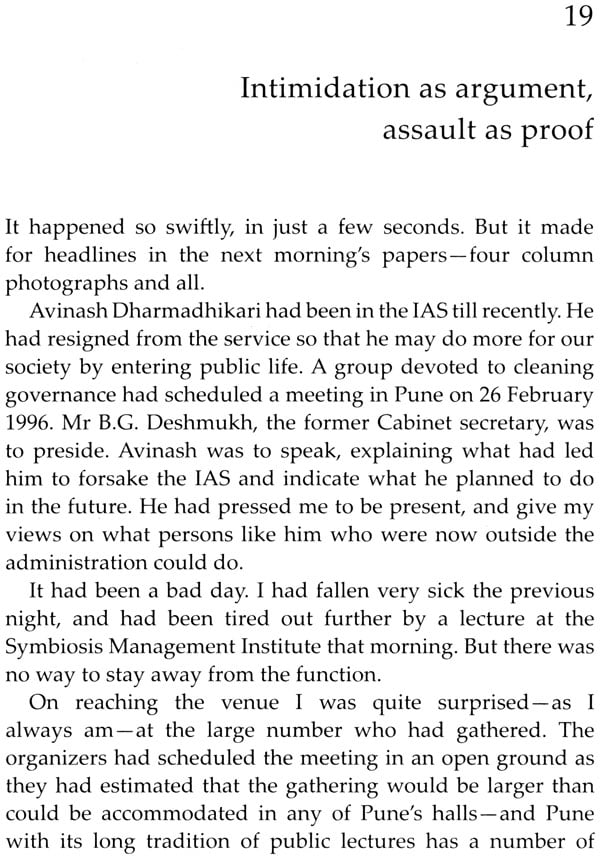
Worshipping False Gods (Ambedkar, and The Facts Which Have Been Erased)
Book Specification
| Item Code: | NAK800 |
| Author: | Arun Shourie |
| Publisher: | Harper Collins Publishers |
| Language: | English |
| Edition: | 2012 |
| ISBN: | 9789350293430 |
| Pages: | 673 |
| Cover: | Paperback |
| Other Details | 8.5 inch X 5.5 inch |
| Weight | 500 gm |
Book Description
Over the last couple of decades, B.R. Ambedkar has come to be idolized as no other political leader. His statue is one of the largest in the Parliament complex. Political parties have reaped rich electoral dividends riding on his name. A decades-old cartoon of him in a textbook rocked Parliament for days recently, causing parties across the political spectrum to run for cover and call for the withdrawal of the 'offending' cartoon.
In Worshipping False Gods, Arun Shourie employs his scholarly rigour to cast a critical look at the legend of Ambedkar and bring out facts that have been erased from public memory. With his distinctive eye for detail, Shourie delves into archival records to ask pertinent questions: did Ambedkar coordinate his opposition to the freedom struggle with the British? How does his approach to social change contrast with that of Mahatma Gandhi, of Sri Narayana Guru? Did the Constitution spring from him or did it grow as a dynamic living organism?
Passionately argued, based on a mountain of facts it presents, Worshipping False Gods compels us to go behind the myths on which discourse is built in India today.
A nation forges deities in its imaginings, in its sacred literature, in wood and stone. The forms it gives them, the forces it has them embody, the virtues with which it endows them reflect the accumulated experience of the nation, the insights of its seers; they answer to its needs. When the nation is overpowered physically, when it is vanquished spiritually and intellectually, it is made to shift, and per force it actually shifts those representations from public places and cabines them within private dwellings. Next, within those dwellings it herds them into almirahs. Soon enough it is made to feel ashamed of, and it actually becomes ashamed of those deities and representations. Eventually it repudiates its own gods, its own tradition, its own history and experience, and starts worshipping the gods of the conquerors.
This sequence was in full swing in northern India by the fourteenth-fifteenth century, and would have proceeded to completion had the country not been saved by the bhakti movement. By the late nineteenth century again the process was gathering momentum-the Christian missionaries, Macaulay were all set to succeed. The country was rescued from drowning by Swami Dayananda, Ramakrishna Paramahamsa, Swami Vivekananda, by Sri Aurobindo, by Narayan Guru, by Bankim Chandra Chatterjee and a handful of others. They reminded us of our heritage, they restored our faith in our traditions, our gods and goddesses, in our forms of worship, in a word in ourselves. They showed us that far from being ashamed of our past, our nation and country had gleaned and then, in spite of the vicissitudes of centuries, preserved for the world the pearl of great price.
The net result of the last fifty years is that once again in India today that same sequence is afoot. The Lokmanya is as good as forgotten. Few outside Kerala know of Narayan Guru. Apart from a narrow circle of devotees no one remembers what Swami Dayananda, Ramakrishna Paramahamsa, Sri Aurobindo, Ramana Maharshi, the Paramacharya at Kanchi did to stand us on our feet. Swami Vivekananda is dusted up and taken out on occasion-dressed up exactly as the secularist he would have berated. Gandhiji is in the dock every day - one day for having been a throwback, the next for having pushed the Muslim leaders into insisting on Pakistan. And persons like Ambedkar are deified.
Indeed, no one is idolized these days the way he is. His statue is one of the largest in the Parliament complex. His portrait in the Central Hall of Parliament is larger than life. The Bharat Ratna has been conferred on him posthumously, a national holiday has been decreed in his honour. Postage stamps have been issued in his honour. Universities have been named after him. His statues-dressed in garish blue, holding a copy of the Constitution-have been put up in city after city: it is a fair guess that by now they far outnumber those of Gandhiji. Politicians, activists and other notables flock to these on several anniversaries of his-on the anniversary of his birth, on the anniversary of the day on which he converted to Buddhism, on the anniversary of his parinirvana, the term which must compulsorily be used now for his death. He is hailed as the one who gave us the Constitution we now have-the fourteen volumes of his speeches and writings which have been published in his honour officially by the Government of Maharashtra include the Draft Constitution among his writings. He is hailed as the one who strove to lift the lower castes, indeed the dispossessed in general. Not just that, while Gandhiji and other Congress leaders - provided of course that they were Hindus, at least by birth-are held to have been responsible for the Partition of the country, because of the propaganda surrounding his name Ambedkar is assumed to have been, and shown to have been one of the fighters for the country's freedom-in the television spots which were put out by government to mark the fiftieth anniversary of the country's Independence, Ambedkar's photograph has been shown between those of Bhagat Singh and Subhash Chandra Bose!
Several factors account for this inversion. During the last fifty years the history of the country's struggle for freedom has been reduced to a few paragraphs in high school textbooks. Indeed, nationalism has been made a dirty word. Moreover, with less and less to commend themselves, politicians have lunged for casteist politics-and so they have made icons of persons like Ambedkar.
But in addition there is a factor for which our intellectuals are directly responsible. Discourse today consists of 'slogan- cum-stampede'. Some slogan is floated-Garibi Hatao one day, 'Social Justice' the next. No one goes into the details of it. Instead, there is a stampede in its wake. In the case of persons like Ambedkar and their deification there is in addition verbal terrorism, and, increasingly, actual, physical assault: once the slogan has been put out, and the stampede with it as the banner has begun, anyone who draws attention to the facts, even to the things which the man himself said and did, things which he flaunted, that person, as I can testify from personal experience, is set upon.
Soon what started as the convenience of some politician becomes myth, and myth becomes fact. And the country adopts as its deities the very ones who had striven for decades and decades with its enemies to keep it in subjugation.
Disorientation, and from that disarray, and thence disintegration are the certain outcome.
| Introduction | ix | |
| The Freedom Fighter | ||
| 1 | The freedom fighter | 3 |
| 2 | Where was Ambedkar in 1942? | |
| How did he get there? | 63 | |
| 3 | The loyal minister | 100 |
| 4 | The government he joined | 118 |
| 5 | Confronting that' old rascal', that 'miserable little old man', that 'most successful humbug in the world' | 166 |
| The Social Reformer | ||
| 6 | The British stratagem, and its Indian advocate | 221 |
| 7 | The way to reform | 320 |
| The Manu of Our Times? | ||
| 8 | Wasn't Ambedkar telling the truth? | 385 |
| 9 | Ambedkars Constitution | 400 |
| 10 | The way the Constitution actually evolved | 433 |
| 11 | Who is the author when decisions are by votes? | 451 |
| 12 | The folklore of freedom | 467 |
| 13 | The subsequent journey | 486 |
| 14 | Which Ambedkar is the author? | 507 |
| 15 | The tug of events | 523 |
| 16 | Two overarching determinants | 571 |
| 17 | The myth fostered, driven in | 587 |
| Invention, Intimidation, Assult | 619 | |
| 18 | It is painful', 'It is shameful', 'It is hateful' | 607 |
| 19 | Intimidation as argument, assault as proof | 619 |
| Frequently cited Texts and Index | ||
| Volumes and collections which have been referred to frequently | 643 | |
| Index | 645 | |
| Acknowledgements | 665 | |
